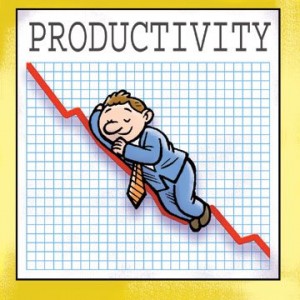 What’s hot right now in the legal industry and what trends can we expect to play out in 2012? For 23 years, Bob Denney has made that call in his report, “What Hot and What’s Not in the Legal Profession.” Here in its entirety is his latest report.
What’s hot right now in the legal industry and what trends can we expect to play out in 2012? For 23 years, Bob Denney has made that call in his report, “What Hot and What’s Not in the Legal Profession.” Here in its entirety is his latest report.
This is our 23rd annual report on what’s going on in the legal profession, not only in the United States but also in other parts of the world. Like all our previous reports it is based on information we compile throughout the year from many sources, including discussions with leaders in the profession. As always, some of our findings are obvious but they still must be included. Others are surprising and some are contrary to the Conventional Wisdom. Nevertheless, this is the picture at the beginning of 2012, a year which may well hold both economic and political surprises.
PRACTICE AREAS
RED HOT:
- Banking. Perhaps the hottest area in Financial Services due to uncertainty if the “Volker Rule†will be implemented this coming July when regulations that are part of Dodd-Frank take effect.
- Health care. A broad area that includes regulatory, finance, M&A, real estate, labor & employment and professional liability. Regulatory may become red, red hot. The Supreme Court’s ruling on the Patient Protection and Affordable Care Act, expected by June 30, will be a legal, as well as political, flashpoint.
- Energy. Oil, coal and gas in certain parts of the U.S. as well as Canada. Regulatory, land use and litigation are particularly hot in Ohio and Western Pennsylvania because of Marcellus Shale. Nuclear power is getting hot due to safety concerns in the U.S. but alternate energy may be cooling somewhat.
- Intellectual property. Due to patent reform (“First-to-fileâ€) but mostly for start-ups and smaller companies since large companies were already on a FTF system because of their global operations. Patent Litigation is becoming red hot for most firms while rate-sensitive patent prosecution work is being reduced and even eliminated in larger firms.
HOT:
- White collar crime. Internal investigations due to fraud continue to increase. Adding fuel to the fire are new issues relating to the disclosure of inside information on social media.
- Regulatory. Many states are passing laws in opposition to federal regulations, particularly in health care, energy, banking and environmental. Constitutional issues are beginning to arise.
- Financial services. Mergers and acquisitions. Venture capital. Private equity. As a result, IPOs are really red hot right now—since about 200 companies have filed this year, the largest backlog in more than a decade. However, some experts say new issues will cool down in 2012.
- Cyber crime. Due to growing hacking and security issues at computer networks.
- Labor and employment. On both the labor and management sides. Violations of wage-and-hour laws are increasing. Collective bargaining is a hot issue. Right-to-Work is heating up. Some L&E departments have added immigration lawyers.
- Commercial litigation. In addition to patents and white collar crime, regulatory, insurance, health care and retail/wholesale cases are hot. Some experts and GCs report a big increase in “bread-and-butter†cases—some call it “law factory workâ€â€”and a steady decline in “bet the farm†cases. The decline in cases going to trial continues, resulting in more Alternative Dispute Resolution. Also see “Online ADR†under “Other Trends and Issues,†below.
- Immigration. With some exceptions, BigLaw and even MidLaw firms leave this to firms that specialize in it.
GETTING HOT:
- Commercial real estate. Some investors are buying individual loans and real estate owned (REO) properties taken back by the lender after foreclosure. Others are buying or building multi-family residences to capitalize on the booming rental market.
GEOGRAPHIC MARKETS
- Washington, DC. “The British are coming! The British are coming!†Four and perhaps all of the U.K.’s top five firms – the so-called “Magic Circle†– are opening offices here in an attempt to build U.S.-based regulatory practices. This is part of their broader strategy to enter the U.S. market in a big way.
- Texas, particularly Houston. The British aren’t coming – at least not yet – but the energy business continues to attract more U.S. firms to open offices here.
- BRIC countries (Brazil, Russia, India, China). As we stated in last year’s report, they continue to be regarded by global firms as major growth opportunities. But see “Challenges to Globalization†under “Other Trends and Issues†below.
MARKETING AND BUSINESS DEVELOPMENT
HOT:
- Social media. Hotter than ever. As Deborah McMurray pointed out in her recent blog, it “is driving business and influencing it.†Legal marketing expert Larry Bodine sees huge potential for Google+ in marketing. However, some firms are starting to encourage more in-person relationship building instead. Also more firms continue to develop social media polices to prevent ethical as well as legal violations.
- Experience databases and KM. Also hotter than ever. This is why Content Pilot, McMurray’s strategy and technology company, developed Velocity, a mobile app to quickly provide information on a firm’s experience and expertise.
- RFPs. In the words of one CMO, “They are pouring in to big firms.†As a result, proposal automation apps that automate the RFP process continue to be hot.
GETTING HOT:
- Educational online video. In his post on Attorney at Work, Bob Weiss says these are an excellent opportunity to build a practice.
- Return on investment. Firms are paying increasing attention to this. One example: Susan Greene, Marketing Director at Becker & Poliakoff, constantly evaluates goals and spending to measure the marketing ROI.
- Recruiting and marketing. Recognizing the relationship of the two functions, Benesch, Friedlander, Coplan & Aronoff has elevated CMO Jeanne Hammerstrom to be in charge of recruiting as well.
- Client interviews and audits. More firms are recognizing, however slowly, that the feedback and information obtained from them—particularly when they are conducted by knowledgeable outside consultants—are critical in strategic planning and development of growth strategies.
OTHER TRENDS AND ISSUES
- Firm management. As discussed in our November Legal Communique, in addition to DLA Piper’s bringing in an outsider to co-chair, some MidLaw firms are bringing in non-lawyer business professionals as advisors—an interesting and encouraging trend.
- Revenues and profitability. According to various reports, since 2008 total revenues as well as revenues per lawyer (RPL) have been flat or even down for many firms in the AmLaw 100. This may be one reason for their reporting profits per partner (PPP) instead. Now CitiBank recently reported that revenues and profits will be down this year for a high percentage of AmLaw 200 firms. However, in most . . .
- MidLaw firms revenues as well as RPL continue to increase and their PPP are on budget if not exceeding it. As we have been reporting, these firms are growing by attracting work from large clients who won’t pay BigLaw rates, even with AFAs.
- Fewer partners. BigLaw firms in particular are promoting fewer associates to partner. They are also making the partnership track longer and the requirements tougher. Legal pundits say this is probably a permanent change that will continue even after the economy recovers.
- Fewer entry level associates. Although summer associate hiring has generally increased for 2012, some BigLaw and also MidLaw firms plan to hire fewer first-year associates than they did before the recession. Instead, in addition to recruiting lateral partners, they are recruiting two- and three-year associates who don’t need several years of development before they are profitable. However, a few MidLaw firms report that, despite offering lower salaries, they are now able to attract high-quality 3Ls who would have gone to BigLaw firms in the past.
- The new leverage. The age-old principle of leverage, a high ratio of associates to partners, is steadily dying out. As I discussed in the September/October 2011 issue of Law Practice, it is being replaced by a “New Leverage†based, not only on associates, but also on other forms of leverage—temporary or contract lawyers, paralegals, process management specialists and by the outsourcing of functions such as legal research, e-discovery and document management. This trend is not restricted to law firms. Many corporate legal departments, faced with senior management directives to reduce costs, are doing the same.
- Non-lawyer competition and deregulation. A mid-year post on the Kowalski and Associates blog stated that “non-lawyers and corporate entities not owned by lawyers are actively delivering almost $2,500,000 in legal services through LPOs and Internet providers of legal services.†New model firms such as NovusLaw and Legal Zoom are just two examples. This trend is resulting in a groundswell of cries for deregulation. However, in a letter to the editor of the New York Times after it ran an op-ed supporting this trend, ABA President Bill Robinson, stated that “A rush to open the practice of law to unschooled, unregulated non-lawyers … would cause grave harm to clients.†Stay tuned. This battle over deregulating the practice of law will continue. The Jacoby & Meyers suits were just one example. Keep in mind that other professions, such as accounting, architecture and medicine, have already found answers to this issue.
- Globalization. Continues but is getting more complex. In a recent Ark Report, Leigh Dance, President of ELD International, describes a “multi-polar world†in which a growing range of legal services must be delivered to multiple geographic markets. But she says there are alternatives to opening offices everywhere and also that emerging markets are growing faster than mature markets, i.e., the U.S. and Western Europe, and will continue to grow, particularly in Asia.
- More on globalization. Global growth is not limited to BigLaw firms. Liaisons, affiliations and networks offer opportunities for MidLaw and even SmallLaw firms to grow internationally. Also the ABA Commission on Ethics 20/20 has posted draft proposals to make it easier for U.S. lawyers to engage in cross-border practice. But there are also . . .
- Challenges to globalization. As reported by Anna Stolley Persky in the NovemberABA Journal, “U.S. law firms face an increasingly competitive—and often protectionist—legal environment when they seek to extend their operations overseas.†Some countries, such as Canada and potentially the U.K. and Australia, have few restrictions on foreign lawyers practicing. But others, including the BRIC countries, have significant restrictions. For U.S. firms there may also be another challenge to globalization which is …
- Capital. Since growth requires capital and, except in Washington D.C., U.S. firms may not have outside investors, will even the largest firms have sufficient capital to fund global growth? Historically, compared to other businesses (yes, a law firm is a business!), law firms have needed relatively little working capital which, in most cases, they have been able to obtain through short-term line-of-credit loans or off-balance sheet leases. However, for BigLaw firms this may change in the future as a result of their emphasis on growth and the resulting need for capital. Adding to the pressure are the U.S. growth plans of U.K. firms, which now have access to outside capital as a result of the Legal Services Act. This issue of non-lawyers having ownership in U.S. law firms will continue to heat up.
- Mergers. After declining in 2010, mergers have increased substantially as firms shift from a survival mode to a growth mode. Most legal experts expect this to continue. However, in the past as many as 50 percent of the mergers fail because, as I discussed in the October, 2011 issue of Law Firm Partnership & Benefits Report, there are many challenges and adjustments that need to be made if a merger is to succeed.
- Alternative fee arrangements. Lots of talk and some interesting action. Pfizer’s program with 17 selected firms is noteworthy, including its mandate that neither in-house nor outside lawyers are permitted to mention hours. But there is . . .
- More on AFAs. According to Fulbright & Jaworski’s Annual Litigation Trends Report, “Despite the growing use of AFAs … more than half of the larger companies [surveyed] and about two-thirds of the mid-size companies estimate they use AFAs for less than 20 percent of outside legal spend.†Furthermore, according to many firm leaders, the benefits and workability of AFAs are being questioned by clients as well as by firms.
- Client satisfaction. The Fulbright Report also said respondents’ satisfaction with how well outside counsel meet their litigation needs in four key areas was between 17 percent and 21 percent for U.S. companies but over 50 percent for U.K. companies. Furthermore, in all four areas, “the figures are lower than they were in last year’s survey.†In view of all the emphasis firms are supposedly placing on client service, these figures, particularly for U.S. firms, are alarming.
- Legal project management. More firms continue to retain outside consultants to help design and install LPM programs to deliver more value to clients and more profit to the firm.
- E-Discovery. It is now becoming a necessity in many smaller cases which could well add cost and complexity to litigation.
- Online ADR. General Electric’s oil-and-gas division is testing online dispute resolution by requiring thousands of suppliers to agree to cyrbersettlements in simple disputes. Right now the approach is being tested mostly in Italy. It will be interesting to learn the results and if GE expands the approach to other countries including, of course, the U.S.
- Law school admissions. Responding to a poll by Kaplan Test Prep, 37 percent of 128 law school admission officers said they looked up an applicant on Facebook or other social media sites, and 32 percent said they had found something online that hurt an applicant’s chances of admission.
- Law school job placement statistics. Last year, Villanova Law School admitted inflating the figures in its reports of jobs obtained by graduates. Now Michigan’s Thomas M. Cooley Law School, the largest in the country, and New York Law School have been sued on behalf of students and graduates demanding tuition refunds “and other remedies†for inflating post-graduation legal employment and salary statistics. Are these the only schools guilty of this? The lawyer representing the plaintiffs says “… this problem is not just confined to those two schools.†This could become a disturbing trend.
- Associate training. Milbank, Tweed, Hadley & McCloy is taking it to a new level. Harvard Law and Business School faculties, with assistance from firm partners, conduct a program for third- to seven-year associates. Subjects include business, finance, personal development and leadership.
- Succession planning. Although a growing number of firms are addressing the issue, it is becoming even more of a challenge. Some older partners are not retiring because they need to continue working for obvious economic reasons.
- Legal services corporation. A subcommittee of the House Appropriations Committee has recommended a cut from the $404 million LSC received this year to $300 million in 2012. ABA President Robinson stated this is a “draconian cut†because one out of every two people seeking legal services is now turned away by LSC.
- Medical-Legal partnerships. According to CNN Money, MLPs provide legal services to patients in 200 hospitals and clinics throughout the U.S. In what is considered a major commitment to expand free critical services to more patients, Wal-Mart’s legal department is now providing free legal services for patients at the Arkansas Children’s Hospital. This is described as the first such partnership between a large corporate legal department and a major hospital. In view of the situation at LSC, we hope this trend continues.
- Mothers-in-the-Law. Since it was founded in Seattle in 2006 to address the home-work conflict that exists for mothers in law firms, the Mother Attorneys Mentoring Association (MAMA) has grown to more than 550 members in six cities. Another 25 chapters are now being developed.
There has been much talk about the “New Normal†in the legal profession. Yet some of these trends and issues, such as pressure to kill the billable hour and replace it with AFAs, are not new. Others, such as involving outsiders and non-lawyer businesspeople in firm management, are new. But, whether old or new, will they really become “normal?†That remains to be seen.
Bob Denney is President of Robert Denney Associates, Inc. He says “it seems like forever†that he has been providing counsel on management and growth strategy to firms throughout the United States and parts of Canada. The complete annual “What’s Hot and What’s Not in the Legal Profession†is available as a download on his firm’s website, www.robertdenney.com. Contact Bob atbob@robertdenney.com if you’d like to be added to his mailing list and receive quarterly trends updates.















